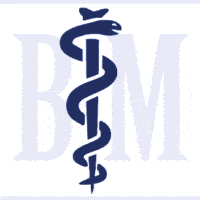NOT COMPLETELY DRY
Some areas are still affected by sweat, whilst others are dry? The success of iontophoresis is not always evenly distributed.
Does iontophoresis only work partially for you? Does your sweating remain unchanged, or do some body areas fail to reach dryness?
Background information: the body resistance is lower in areas that sweat more heavily.
Logically, this means that increased currents flow precisely through the areas that are still sweating. These higher currents usually take an effect on the sweaty areas and should eventually manage to achieve dryness in these parts.
Don't panic: refer to your magic number.
You can wait and see when treating in minimum the length of your personal magic number first.
Calculate your magic number
To calculate the magic number, we take the number of days from the beginning of the initial therapy up until the moment you first reached success. Your first success is the moment when the first areas have become 100% dry. Divide this number of days by 1.5.
Next, add this number of days to your interval of treatment days and break days. Using this method, wait and see whether you achieve complete dryness on your own.
If this did not work, it is safe to assume that these areas simply need a longer exposure to the current.
Once you are sure that you have devoted enough time to the initial therapy, you can focus on the areas that are still sweating.
They can be treated separately with a reduced current dose.
Of course, it all depends on the affected body part.
The water line separates two areas
We distinguish between the areas that are surrounded or covered by water and all other areas that lie above the water.
If you need a higher effect in the areas below the water, this usually means that the water level is too high. Therefore, the current flows through the nail bed or the thin areas of skin on the side of the hands or feet. (Topic: water level.)
If you require a higher effect in the areas above the water, another adjustment of the water level is necessary. Please take into account the height of the iontophoresis effect. Position the water line accordingly for each desired treatment area.
Sometimes, it is normal that the hand is largely dry in most places, but not in individual parts, such as the fingertips or different fingers.
These mostly smaller areas, such as the fingertips, can be treated separately. Please observe the recommended current limits.
IMPORTANT: Your comfort is important. The skin must always be in perfect condition before, during and after therapy. Redness or irritations should not occur. To be on the safe side, you should perform regular check-ups of the skin whenever you change any parameters.
Beware the current limits! The current value should never exceed 0.1 mA per treated square centimeter. This limit has been set by the Federal Institute for Drugs and Medical Devices in the European Union (Maybe other institutes like FDA show lower limits). In case of doubt or when the limit is deliberately exceeded, please consult a physician.
Careful approach is the best strategy. When focusing your efforts on the area that is still sweating, you must reduce the treatment current according to the treatment area.
This means that the current you previously used to treat the entire body part is reduced according to the percentage above.
Always conduct the treatment according to this rough reference value. The reason: if you treat your little toes with the same current strength you would apply to your entire foot, this will lead to skin problems. Nobody wants that!
In short: you should always reduce the current proportionally and generously, especially in the beginning of your treatment. You can always further adjust if the skin reacts well.
Increase the body resistance in larger areas of skin that are no longer affected by sweat
For areas of skin which are not supposed to be exposed to the current during the treatment, you can simply apply Current Care or another lotion before the therapy session.
Protecting a body part from the water
Please do not use Vaseline for this purpose! We recommend using the Nivea Blue lotion or any other white, fatty baby cream. With a white cream, you will be able to see if you missed any parts.
Keep the protected areas above the water line, or rest them on a plastic object that is elevated above the water.

Treating single parts / One hand or foot
If you only want to treat one hand, you can conduct a separate treatment.
For this purpose, put the electrodes on a non-conductive surface at a distance of 5 cm to each other. Place a thick, damp towel on each of them. The distance between the towels should be 3 cm. Next, place the heel of the hand on one electrode and the fingertips on the other electrode.
It is advisable to start with half the current intensity (50%) you would use when treating both hands at the same time.
Underarm electrodes in thick sponge covers can be very helpful and convenient for this purpose. Simply place one of the sponges under the heel of the hand and the other sponge on the underside of your fingers.
